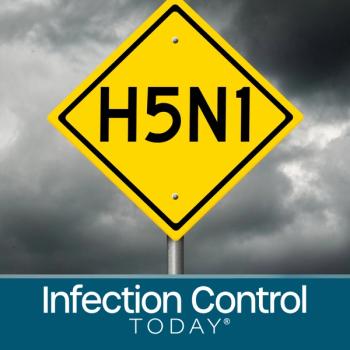
More Details About President Trump’s Reopening Plan
Deborah Birx, MD, the Coronavirus Response Coordinator: “Throughout the summer, when we do not have flu to contaminate the picture, we’ll be able to follow the syndromic pattern city by city, community by community, state by state."
There may be sentinel surveillance sites opening up near you soon. The sites, which federal health officials hope will alert them to possible hotspots that might spring up due to asymptomatic carriers of COVID-19, were just one of the details revealed Thursday about President Donald Trump’s plan to
Trump said Thursday that reopening would happen in 3 phases. At a White House
Using a slideshow, Birx explained that as the pandemic unfolded across the country, health officials realized that there had been a spike in people experiencing influenza-like symptoms before the spikes in COVID-19 cases. Birx labeled this an “early alert” that sounded mostly in emergency rooms.
“Throughout the summer, when we do not have flu to contaminate the picture, we’ll be able to follow the syndromic pattern city by city, community by community, state by state,” Birx said. The US Centers for Disease Control and Prevention (CDC) will be monitoring this on 3 levels: symptoms, cases, and hospitals. States and/or regions can reopen if they see a downward trajectory of flu-like symptoms for 14 days and a downward trend in COVID-like cases over 14 days. The same practice applies to cases of COVID-19: States would have to see a downward trajectory for 14 days or a downward trajectory of positive COVID-19 test results over 14 days. Hospitals will need to be able to treat all cases without crisis care and have a robust program in place to treat health care workers, including emergency antibody testing.
States will need to be able to set up testing sites for those with COVID-19 symptoms and also be able to trace contacts of those individuals. Birx also said that the sentinel surveillance sites to be established would be on the lookout for asymptomatic carriers, particularly in vulnerable communities.
“We’ll be doing sentinel surveillance throughout nursing homes, throughout inner city federal clinics, throughout indigenous populations to really be able to … have early alerts on asymptomatic individuals in the community,” Birx said.
Hospitals must have adequate supplies of personal protective equipment and ICUs must be able to handle an influx of cases if needed.
“We want every state to have a plan for the health and safety of its workers in critical industries and protect the health and safety of those living in high-risk facilities including senior care facilities, as we discussed with sentinel surveillance,” Birx said.
She said that when the Task Force spoke with state leaders where there had not been a major metro outbreak, sentinel surveillance always picked up the first cases in nursing homes.
“This is very much a big focus on the plan moving forward,” Birx said.
She also went over territory that has been well-trod in recent months such as proper hand hygiene, avoiding touching the face, and using face coverings while in public.
“And critically, stay home when you are sick,” Birx said. “I know a lot of people go to the workplace when they’re feeling ill. You know when you’re feeling ill. You won’t get better by going to work.”
Birx urged employers to encourage social distancing, use disinfectants in high-trafficked areas, monitor for symptomatic workers, and forbid non-essential travel.
“Ensure that there’s contact tracing for all the individuals who become sick,” she added.
Birx said that Phase 2 of the plan would allow gatherings of about 50 people, and non-essential travel can resume. Employers in Phase 2 should still encourage telework and common areas within office spaces should remain closed. Non-essential travel for employees would resume.
Also, schools, daycares, and camps can reopen in Phase 2. “This should be a relief for many households that have small children,” Birx said.
However, visits to senior living facilities and hospitals should be prohibited, she said.
Birx would not go into as much detail about Phase 3, except to say that it involved returning to “the new normal.” Safe distancing and good hygiene should continue because “as we know, we do have an issue with asymptomatic spread.”
She added: “I do believe with this plan that we’re both confronting the issue of finding symptomatic individuals through our networks with early alert as well as those who come and present to different hospitals and to emergency rooms with testing and contract tracing. But critically we have put in place what we believe is a safety net of asymptomatic sentinel surveillance that is centered around our most vulnerable groups between nursing homes and Native American people and indigenous populations and our inner-city groups that we know may be in multi-generational households and at unique risk.”
Trump’s announcement Thursday was the signal some states had been waiting for.
Texas plans to allow retailers to offer to-go sales, reopen state parks, and allow doctors to perform surgeries and diagnostic tests that had been put on hold because of COVID-19.
Texas Gov. Greg Abbott said Friday that “we have demonstrated that we can corral the coronavirus.” Abbott is creating a “strike force,” that will include medical experts, elected officials and business leaders, to guide the effort to reopen his state’s economy, the
Newsletter
Stay prepared and protected with Infection Control Today's newsletter, delivering essential updates, best practices, and expert insights for infection preventionists.





